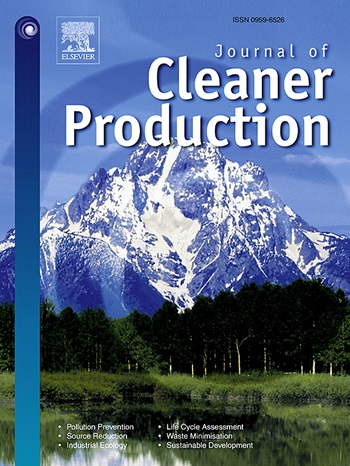1990 - 2018年中国及其气候带林区总初级生产力驱动因素分析
IF 9.7
1区 环境科学与生态学
Q1 ENGINEERING, ENVIRONMENTAL
引用次数: 0
摘要
总初级生产力在全球碳平衡中起着至关重要的作用。然而,由于使用的建模技术和数据不同,量化不同驱动因素的影响仍然是一个挑战。本研究采用时空分析、机器学习和统计学方法,对1990 - 2018年中国及其气候带森林总初级生产力驱动因素的显著性进行了测度。结果表明:研究期间,中国森林年平均总初级生产力为914.74 gC - m-2 y-1,并以4.09 gC - m-2 y-1的速率呈显著增长趋势(p<0.01);森林总初级生产力呈东南—西北下降的时空趋势,除干旱半干旱区外,6个气候带内的分布差异显著。当使用10个解释变量时,随机森林模型比极端梯度增强模型表现更好。这些变量包括新的森林破碎化指数和气候带,有助于更好地解释森林结构和气候特征对气候带的影响。中国森林总初级生产力最重要的驱动因素是年平均温度(26.2%)、年平均降水(18.6%)、太阳辐射(11%)、森林破碎化指数(8.8%)和海拔(8.1%)。利用查特吉相关系数,本研究为每个气候带提供了其关于森林总初级生产力驱动因素的顺序和重要性的独特特征。这项研究通过展示机器学习如何发挥作用,帮助我们更好地了解影响中国及其气候带森林总初级生产力的因素。这些发现可能有助于中国实现其碳中和目标。本文章由计算机程序翻译,如有差异,请以英文原文为准。


Disentangling gross primary productivity drivers of forested areas in China and its climate zones from 1990 to 2018
Gross primary productivity plays a critical role in global carbon balance. However, quantifying the effects of different drivers still constitutes a challenge due to the different modeling techniques and data used. This study employs spatiotemporal analysis, machine learning, and statistical approaches to measure the significance of forest gross primary productivity drivers in China and its climate zones from 1990 to 2018. The results show that the annual average forest gross primary productivity in China was 914.74 gC m−2 y−1 during the study period and showed a significantly increasing trend (p < 0.01) at a rate of 4.09 gC m−2 y−1. Forest gross primary productivity had a southeast-northwest downward spatiotemporal trend with significantly different distributions within the six climate zones, except in the arid and semi-arid zones. A Random Forest model did better than an eXtreme Gradient Boosting model when 10 explanatory variables were used. These variables included the novel forest fragmentation index and climate zones, which helped explain the effects of forest structure and climate characteristics of the climate zones better. The most important forest gross primary productivity drivers in China were mean annual temperature (26.2 %), mean annual precipitation (18.6 %), solar radiation (11 %), forest fragmentation index (8.8 %), and elevation (8.1 %). Using Chatterjee's correlation coefficient, this study provides, for each climate zone, its unique signature regarding the order and importance of the drivers of forest gross primary productivity. This study helps us understand what factors affect forest gross primary productivity in China and its climate zones better by showing how they work using machine learning. These findings may help China reach its carbon neutrality goals.
求助全文
通过发布文献求助,成功后即可免费获取论文全文。
去求助
来源期刊

Journal of Cleaner Production
环境科学-工程:环境
CiteScore
20.40
自引率
9.00%
发文量
4720
审稿时长
111 days
期刊介绍:
The Journal of Cleaner Production is an international, transdisciplinary journal that addresses and discusses theoretical and practical Cleaner Production, Environmental, and Sustainability issues. It aims to help societies become more sustainable by focusing on the concept of 'Cleaner Production', which aims at preventing waste production and increasing efficiencies in energy, water, resources, and human capital use. The journal serves as a platform for corporations, governments, education institutions, regions, and societies to engage in discussions and research related to Cleaner Production, environmental, and sustainability practices.
 求助内容:
求助内容: 应助结果提醒方式:
应助结果提醒方式:


